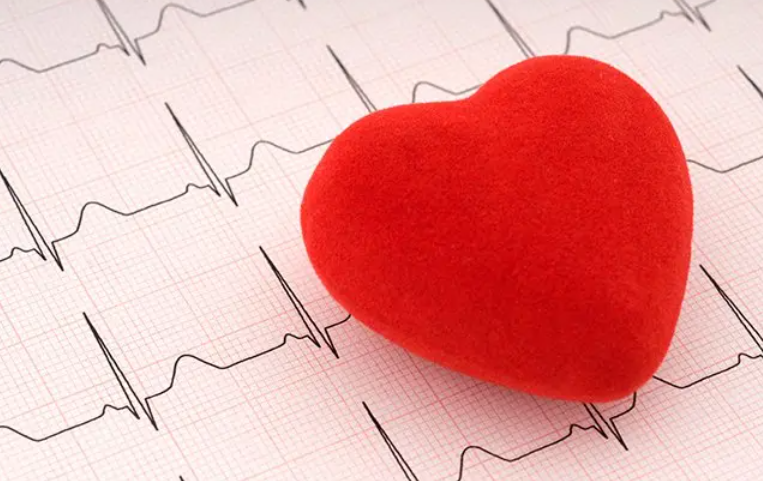
Your resting heart rate is a fundamental indicator of your overall health and fitness. It's the number of times your heart beats per minute when you're at rest, providing valuable insights into your cardiovascular system's efficiency. While a general range often gets cited, what's considered “normal” can vary significantly across different age groups. As an SEO expert specializing in health content, I've broken down everything you need to know about normal resting heart rates, tailored for various ages.
What is a Normal Resting Heart Rate?
Generally, a normal resting heart rate for adults falls between 60 and 100 beats per minute (bpm). However, this is a broad spectrum. Factors like your age, fitness level, medications, and underlying health conditions all play a role. Think of your resting heart rate as a baseline; it's a window into how hard your heart is working to pump blood when your body is calm and not under stress from physical activity or strong emotions.
Normal Resting Heart Rate by Age: A Detailed Breakdown
Understanding how your resting heart rate typically changes with age can help you monitor your health more effectively. Here's a breakdown by age group:
| Age Group | Normal Resting Heart Rate (beats per minute) | Notes |
| Newborns (0-3 months) | 100-150 bpm | Infants have a much faster resting heart rate as their bodies are growing rapidly and have higher metabolic demands. |
| Infants (3-6 months) | 90-120 bpm | Heart rate gradually decreases as they grow. |
| Infants (6-12 months) | 80-120 bpm | Continued slight decrease. |
| Children (1-3 years) | 70-110 bpm | Heart rate continues to slow as the child develops. |
| Children (3-5 years) | 65-100 bpm | Approaching adult ranges but still generally higher. |
| Children (6-12 years) | 60-100 bpm | Often aligns with the lower end of the adult range. |
| Adolescents (13-18 years) | 60-100 bpm | Similar to adult ranges. Highly fit teens might have lower rates. |
| Adults (18+ years) | 60-100 bpm | This is the standard range. Highly conditioned athletes may have rates as low as 40-60 bpm. |
| Older Adults (65+ years) | 60-100 bpm | Generally remains within the adult range, but certain age-related conditions or medications can influence it. |
Measuring Your Resting Heart Rate Accurately
To get the most accurate reading of your resting heart rate, follow these steps:
- Choose the right time: The best time is first thing in the morning before you get out of bed, or after at least 10-15 minutes of quiet rest. Avoid measuring after exercise, consuming caffeine, or experiencing strong emotions.
- Find your pulse:
- Wrist: Place your index and middle fingers on your radial artery, which is on your wrist below the base of your thumb.
- Neck: Place your index and middle fingers on your carotid artery, located on either side of your windpipe.
- Count the beats: Count the number of beats you feel in 15 seconds.
- Calculate: Multiply that number by four to get your beats per minute (bpm).
- Example: 15 beats in 15 seconds x 4 = 60 bpm.
Wearable fitness trackers can also provide continuous heart rate monitoring, offering a convenient way to track trends over time.
Resting vs. Active vs. Stressed Heart Rates: Understanding the Differences
It's important to distinguish between your heart rate in different states:
Resting Heart Rate
- Definition: The number of beats per minute when your body is at complete rest, typically measured after a period of inactivity.
- Significance: A lower resting heart rate often indicates better cardiovascular fitness and efficiency.
Active (Exercise) Heart Rate
- Definition: Your heart rate during physical activity. It naturally increases to meet your body's demand for oxygen and nutrients.
- Significance: Monitoring your exercise heart rate helps you gauge the intensity of your workout and ensure you're training effectively within your target zones.
Stressed/Excited Heart Rate
- Definition: Your heart rate when you are experiencing strong emotions like stress, anxiety, fear, or excitement. Your body releases hormones that temporarily speed up your heart.
- Significance: While a temporary increase is normal, chronic stress can lead to sustained higher heart rates, which can be detrimental to long-term heart health. Managing stress is crucial for maintaining a healthy heart rate.
When to Be Concerned: High vs. Low Resting Heart Rates
While the age-specific ranges provide a good guide, consistently having a resting heart rate outside these norms could indicate an underlying issue.
High Resting Heart Rate (Tachycardia)
A resting heart rate consistently above 100 bpm for adults (or above the normal range for children) could be a sign of:
- Poor physical fitness: Your heart has to work harder to pump blood.
- Stress or anxiety: Emotional states can elevate heart rate.
- Dehydration: Lack of fluids can make your heart work harder.
- Fever or infection: Your body's response to illness.
- Anemia: Low red blood cell count means less oxygen transport, making the heart pump faster.
- Overactive thyroid (hyperthyroidism): Excess thyroid hormones speed up metabolism.
- Certain medications: Stimulants, decongestants, etc.
- Arrhythmias: Irregular heart rhythms.
- Heart conditions: Such as heart failure or coronary artery disease.
Low Resting Heart Rate (Bradycardia)
A resting heart rate consistently below 60 bpm for adults (unless you are a highly trained athlete) could indicate:
- Excellent physical fitness: Common in athletes whose hearts are very efficient.
- Underactive thyroid (hypothyroidism): Slowed metabolism.
- Certain medications: Beta-blockers, for example.
- Sleep apnea: Interrupted breathing during sleep.
- Heart conditions: Such as heart block or sick sinus syndrome.
- Electrolyte imbalances.
Understanding the Contrast: Resting vs. Exercise Heart Rate
The difference between your resting and exercise heart rate offers significant insights into your cardiovascular health and fitness.
- Resting Heart Rate (RHR): This is your baseline. A lower RHR generally indicates a more efficient heart. For example, a healthy adult might have an RHR of 65 bpm.
- Exercise Heart Rate: When you exercise, your heart rate increases to deliver more oxygen to your working muscles. For that same healthy adult, their heart rate might jump to 130-160 bpm during a moderate workout.
The ability of your heart rate to increase significantly during exercise and then return to its resting state relatively quickly afterwards (known as heart rate recovery) is a strong indicator of good cardiovascular health. A heart that struggles to increase its rate during activity or takes a very long time to recover may suggest a less efficient system.
Beyond the Number: A Holistic View of Your Heart Health
While your resting heart rate is a valuable metric, it's just one piece of a larger puzzle. To truly understand and manage your heart health, consider a holistic approach that includes:
- Blood Pressure: Regular monitoring is vital, as high blood pressure often has no symptoms but significantly increases the risk of heart disease and stroke.
- Cholesterol Levels: High levels of LDL (“bad”) cholesterol can lead to arterial plaque buildup.
- Blood Sugar Levels: Uncontrolled blood sugar (as seen in diabetes) can damage blood vessels and nerves that control the heart.
- Lifestyle Factors: A balanced diet rich in fruits, vegetables, and lean proteins, regular physical activity, adequate sleep, and effective stress management are all critical for a healthy heart.
- Family History: Be aware of any family history of heart disease, as this can increase your personal risk.
- Symptoms: Pay close attention to any unusual symptoms like chest pain, shortness of breath, dizziness, persistent fatigue, or unexplained swelling. These warrant immediate medical evaluation.
Consulting with a healthcare professional for regular check-ups is the best way to interpret your heart rate and other health indicators in the context of your individual health profile. They can help you develop a personalized plan for maintaining optimal heart health.
Frequently Asked Questions (FAQ)
Q1: Does a lower resting heart rate always mean I'm healthier?
A: Generally, yes. A lower resting heart rate (within the normal range) often indicates better cardiovascular fitness and efficiency, meaning your heart doesn't have to work as hard to pump blood. However, a very low resting heart rate (below 60 bpm) could be a cause for concern if you're not an athlete and experience symptoms like dizziness or fatigue.
Q2: Can caffeine or medications affect my resting heart rate?
A: Yes, both caffeine and certain medications can significantly impact your resting heart rate. Stimulants like caffeine, decongestants, and some asthma medications can increase it. On the other hand, certain heart medications, like beta-blockers, are designed to lower your heart rate. Always inform your doctor about all medications and supplements you are taking.
Q3: How does fitness level influence resting heart rate across ages?
A: Across all age groups, individuals with higher fitness levels (e.g., athletes, people who exercise regularly) tend to have lower resting heart rates. Their hearts are more efficient at pumping blood, requiring fewer beats per minute to circulate blood throughout the body.
Q4: If my resting heart rate is slightly outside the “normal” range, should I be worried?
A: Not necessarily, but it's a good idea to consult your doctor. Many factors can temporarily affect your heart rate, such as stress, dehydration, or a lack of sleep. Your doctor can evaluate your overall health, lifestyle, and other symptoms to determine if there's an underlying issue or if your rate is normal for you.
Q5: What's the difference between heart rate and pulse?
A: Heart rate is the number of times your heart beats in one minute. Your pulse is the feeling of that heart beat as blood surges through your arteries. Essentially, when you “take your pulse,” you are measuring your heart rate.








